Selecting a SLR camera by parameters
In order to choose a SLR camera, you need a clear understanding of what it is and what it is for. Before the era of the development of social networks, professionals were mostly interested in professional cameras, quite consciously buying them to solve highly specialized tasks. To date, quite common is the situation when they buy a SLR in order to create a fashionable image for themselves, without using its capabilities and shooting in automatic mode. It is worth knowing that there are many models designed to perform various types of shooting. Below we will discuss the main criteria by which to choose the mirror technology.
Content
Advantages and disadvantages of the SLR
The main and indisputable advantage of a SLR camera over a digital camera is picture quality. Of course, even the simplest SLR will give the shape of almost any soap box, which does not even have an optical zoom. In addition to high quality images, only a DSLR can give you the experience of creating a real professional photo in different shooting modes. Digital soap trays are deprived of this possibility, since there is only an imitation of shooting different modes without physically changing the optics parameters. Even with good technical characteristics, digital cameras will never be able to provide an adequate level of color, volume and focus.
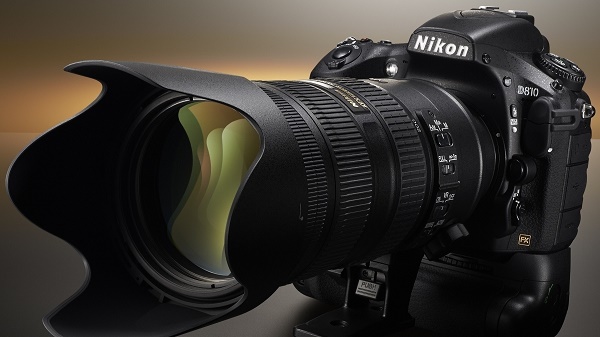
Of course, these cameras have their disadvantages: high cost and large size. This is not the camera that you can put in a handbag or take with you on a camping trip. In addition, a SLR camera requires certain skills, it is unlikely to use its settings “at random”.That is why the “SLR” is the choice of those who want to get something more from a photo than just capturing moments.
Classification of SLR cameras
Conventionally, SLR cameras can be divided into semi-professional and professional. The first option is better to buy for a novice photographer. The latter, as the name implies, are more suitable for people who already have experience in owning such equipment.
Semi-professional SLR
Models for beginners and fans can be attributed to the class of semi-professional DSLRs. As a rule, this is a starter kit for performing basic tasks in the process of photographing. Such models do not include the possibility of a technical upgrade, a frankly weak stuffing reduces the meaning of such manipulations to zero. They are good only for simple shooting: simple compositions, contrasting color reproduction without manual focusing, etc. Semi-professional equipment is best suited for everyday tasks, such as shooting for a family album, photo shoots of parties with friends, holidays with relatives, trips and travels.
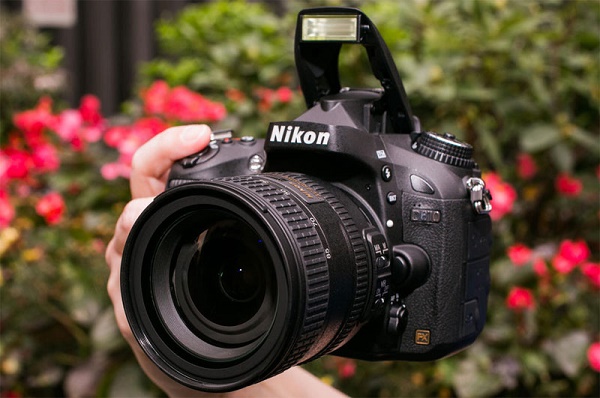
For portrait photography, it would be better to consider a model with more light-sensitive optics, since it implies other working conditions.
Such equipment will be much cheaper even at the stage of acquiring the camera itself without accessories. Beginner models are easily distinguished by large numbers in the index - hundreds and thousands instead of units and tens. Of course, one should not expect a full set of such models from such models, most often with the device itself universal lens (KIT-marking). With a similar starter kit, and even without the necessary experience, it will be rather difficult to start taking high-quality pictures. However, in order to fill the hand, such a lens will be enough. Working with him means knowing the settings in the manual mode, so that a novice photographer will, willy-nilly, have to properly study his device. Anyway, semi-professional line of DSLRs are perfect for the amateur.
Professional cameras
SLR camera for professionals requires more attention. First, such a technique is more difficult to handle, and people with no experience can get a negative result. In addition, when acquiring a professional full-frame device, the future owner must navigate to a large number of components. Often, the cost of professional equipment is very high, even a cursory study of price tags can be enough to discourage beginners from practicing photography at a professional level. And if you add on here optics, which also cost a lot of money, then the amount of investment will be very significant.
In fairness, it should be noted that these SLRs are acquired mainly by those who are engaged in commercial shooting. Amateur and novice photographer such a technique without the need. And even if there is some need for it, then, more often than not, such investments are not affordable.
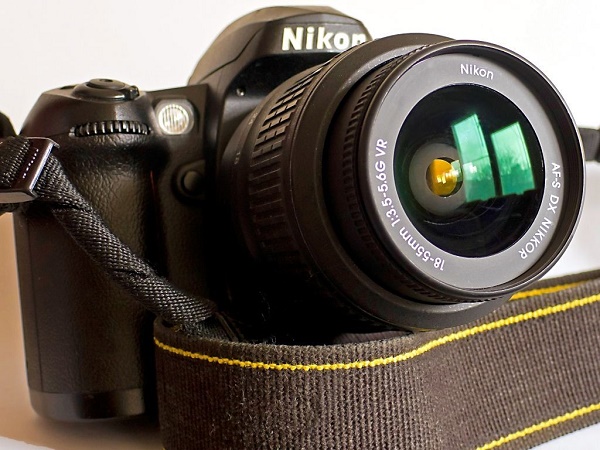
Selection options
A good SLR camera should have a whole range of features and options. For easy orientation in them there are basic selection criteria. Without any help or a list in all indicators it is easy to get confused, because even among the main criteria there are at least fifty positions. The selection of the camera according to the parameters should start with the required indicators of the matrix.
Matrix size and resolution
The digital SLR camera is in many respects analogous to the principle of the film,only in the case of the SLR, the matrix became the main hub of the device. The luminous flux is converted into an electrical signal precisely because of it. By a similar principle, practically any technician that displays the image on the monitor screen works. In other words, the matrix is a microboard, on which millions of sensors with high sensitivity are placed. Of course, in addition to marking, on any chip, the number of elements is indicated (special sensors). Most often, these sensors are called megapixels. A million sensors equates to one megapixel.

The number of megapixels - This is the main characteristic of the camera. The resolution level of the microcircuit (matrix) directly depends on them. In turn, the resolution depends on the quality of shooting, the level of detail, and light sensitivity. The greater the number of megapixels, the clearer the final picture will be.
However, for some types of shooting the number of megapixels is not as important as the possibility of capturing more photons of light, which depends on the physical dimensions of the matrix itself. The larger the matrix diagonal, the more light photons are captured, and the less noise is present in the image. That is why you can get better quality photos only if you have full frame matrix, which is installed only in professional "mirrors".
Light sensitivity
Photosensitivity is included in the main characteristics of the camera, which should be paid attention to first. The appearance of noise - the inevitable companion of any photographic equipment. The laws of physics can not be canceled, as, however, and get around. This is bad news. The good news is that knowing the principles of the structure and operation of a phenomenon, its negative consequences can be minimized.
Noises are a chaotic cluster of multicolored dots appearing in low light. The worse the lighting of the object or composition, the more you can observe the effect of noise. Most of all, it appears on defocused objects (backs, dark objects, etc.).

Remove noise in the photo ("before" and "after")
You can get rid of this only on professional graphic editor. However, even getting rid of the noise does not solve the problem completely, because the erosion of noise leads to a noticeable loss of sharpness. Small objects significantly lose their sharpness, the outlines of objects cease to be clear, and contrast lines suffer greatly. Expensive professional devices integrate new noise reduction techniques, but they are not a panacea.
The optimal ISO value is 50, 100, and 400. If the user wishes to set these parameters above, noises will appear in the image. Moreover, the greater the value, the greater the noise. Therefore, you should not give preference to technology with high ISO. The starting models of the main manufacturers are usually similar in their basic parameters. Adhering to the above indicators, you can correctly set the exposure.
Image stabilization
Compact SLR cameras, in contrast to digital soap cases, are not always equipped with an image stabilizer. The fact is that any DSLR is larger in size than its digital counterpart, respectively, and it is much less subject to shaking due to its large size.Any mirror device is easier fixed in a comfortable position, where shaking is excluded. The presence of stabilization affects the classification if it is insignificant. On the market one can meet both a model for beginners with a stabilizer, and a device for professional shooting without this option.
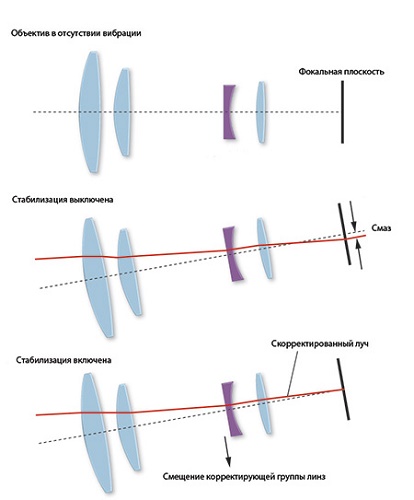
Stabilization is digital and optical. When optical stabilization occurs, mechanical debugging is always a unit with lenses. With digital - only the image conversion.
Taking pictures with a stabilizer is more convenient if:
- implies working with long lens for macro photography;
- set a long exposure in low light conditions (dark, poor lighting, etc.).
Even if the buyer wants to purchase a model in which there is no stabilization, this can in no way serve as a reason for refusing to buy. The best stabilizer for the SLR is the most ordinary tripod.
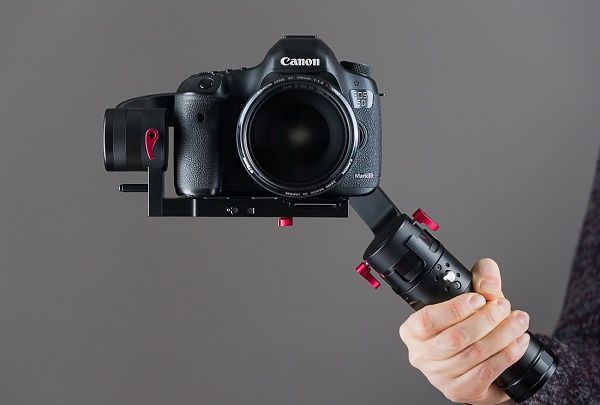
Noise suppression
An amateur camera, designed for subject shooting, often has the function of noise reduction, or, as experienced users prefer to express, “shumodava”. This function is reduced to the fact that the device makes the main frame, and behind it another, darker, with less pronounced exposure. The bottom line is that the second frame is photographed with the same shutter speed, but with the shutter closed, with the result that particles of light do not fall on the matrix. With this format, the shooting is recorded non-random noise generated when the sensitivity of the pixel changes, as well as the presence of so-called. "Hot pixels".
It should be noted that for such a shooting an exposure of several minutes is required.
This option, although very effective, is time consuming. Many photographers turn it off, preferring to resort to services graphic editors at the time of processing photos using a personal computer.
Focusing
Buying a reflex camera with interchangeable optics implies that the user will be well aware of the principles of its operation. The ability to properly focus on the object is one of the basics, without which the frame will not be possible. Modern appliances are equipped autofocus system, and, at first glance, it is very convenient. Naval, focused, shot.In part, this is true, for everyday needs autofocus is really suitable, as it saves time.
There may be questions with professional photography. What if there is not one but several objects in the frame? And if there are a lot of them? Of course, all the SLRs can focus on “one” point (the choice of the owner) or select the autofocus point on their own. How to properly focus in manual mode, you can thoroughly learn from the instructions for a particular model.
For beginners and fans of autofocus can be very useful in many situations, but professional photographers use it quite rarely.
Viewfinder
Both amateur SLR and full-frame SLR cameras are equipped with a viewfinder. Without this important attribute it is difficult to imagine how a photographer can work. A special mirror and pentaprism directs the image into the viewfinder window. There are two types of viewfinders.
- Optical viewfinder - The most common. Mounted in digital cameras. Its advantage is that it does not consume electricity.The disadvantage is the image that is distorted, getting into the frame, as a result of which there is a discrepancy between the objective picture and the one that the photographer sees.
- Electronic viewfinderwhich is a small LCD display. The picture is transmitted through the photosensitive matrix. Good for conveying an objective image, just as the matrix captures it. It takes well even in bright light and glare. The disadvantage is the need for electricity.
- Mirror - The best viewfinder, which is currently able to offer the photo industry. Heir to film cameras - from there it originates. The image is projected using a swivel mirror, which is very convenient. The device, equipped with such a viewfinder, is able to provide the highest quality volume, contrast and contours of objects.
Flash
Any mirror device comes with a flash, usually built-in. As is often the case, the basic configuration does not imply the full disclosure of all the capabilities of the device. Built-in flash It may be useful unless amateurs who have no desire to get new experience and develop in the framework of photography. With the built-in flash, the sense of volume is lost, often wasting all the potential possibilities of the matrix.
If the task list includes complex frame setting, work with volume, shadows and shades, then external flash looks more logical. However, for daytime shooting, as well as for photography in good light, the presence of an additional flash is optional. Often experienced users who already have experience with stage lighting, use entry-level devices without resorting to an external flash.
At night, almost any built-in flash is likely to be useless, as it will snatch objects only at a very short distance.
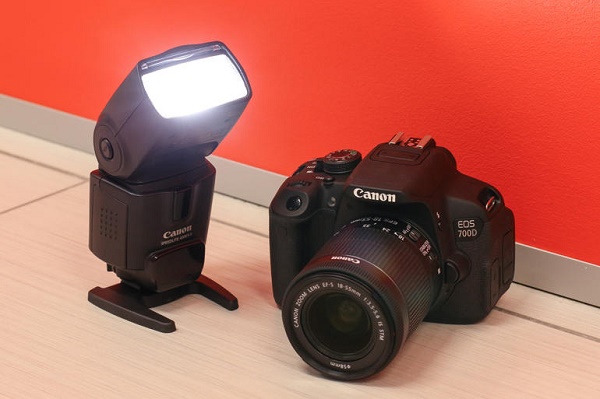
Memory card
Any camera needs a memory card. Without this important attribute it is impossible to get to work, because all information will be stored on it. All professional photographers know that there is not a lot of space, so a sign of good tone is to have plug-in card in case the main one is filled.It is very convenient if the device itself will support the “hot” change of the memory card. As for the volume, it all depends on how intensively you plan to use the device.
Considering that an average image takes up to 5 MB of space on a map, it can be assumed that even 64 GB can be insufficient. The best solution would be to purchase a memory card with a capacity of 128 gigabytes. When purchasing a micro-SD card, do not forget about the standards for the speed of data transfer from the device to the PC. Now these figures are 9, 20 and 40 mb / s, respectively. The higher the speed, the more expensive the user will cost the card.
Some models of 2017 are supplied complete with card reader, which greatly facilitates copying information to external media. In other cases, the card reader will have to be purchased separately, or use the wire that comes with the DSLR.

Conclusion
The choice of a SLR camera is a fairly trivial task. But to determine the level of technology, as it turns out, is not so difficult. For most everyday tasks suitable semi-professional device. If the user has developed the skills of photography, has studied the methods of its processing, has formed his own unique style and is in demand as an expert, then you can think about purchasing high-grade professional equipment and components. In addition, the modern market is able to offer so-called. medium format cameras. These are small devices of compact size, with something remotely resembling a soap box, intended for performing professional tasks.
The main differences between the categories of photographic equipment are the technical component and the possibility of improving the device. If it is simply not worthwhile to buy expensive optics for a budget start-up version, iron simply cannot use its capabilities, in the case of a professional DSLR it is senseless to save on improvements.
Also, the line of cameras are different in terms of "usability". Techniques for beginners are usually much friendlier, while studying the basic functionality of a professional instrument alone can take quite a long time.
Devices with additional (military) standard of protection are produced in small batches, as a rule, this is IP67 or IP68.In the documentation you can find that explosion proof camera able to withstand extremely high and low temperatures, a fall from a height and immersion in water. The demand for such a small SLR, but constant. As a rule, professional photographers can acquire protected equipment to work in difficult conditions, where conventional technology can easily fail. The disadvantage of such equipment is its large size.
Before choosing a SLR camera, you should study as best as possible all the features of the model you like, as well as familiarize yourself with the basic information about the indicators of technology. Possession of a DSLR requires the user to have certain skills that can be gained by spending time learning the art of creating professional photography.

/rating_off.png)











